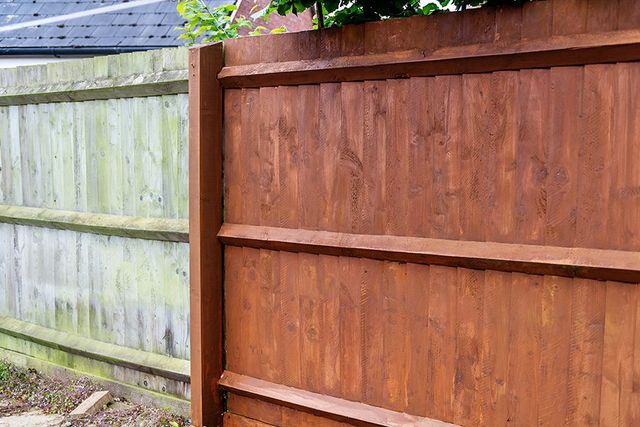Professional Fence Staining Service: Safeguard and Enhance Your Property!
Professional Fence Staining Service: Safeguard and Enhance Your Property!
Blog Article
How to Choose the Right Fencing Spot for Your Building
When it concerns enhancing the look and toughness of your residential property's fence, picking the ideal discolor is a vital decision that requires careful consideration. With a myriad of options offered in the market, each accommodating different timber types, colors, and transparency degrees, the process can rapidly end up being overwhelming. Nevertheless, making an informed selection can substantially affect the general looks and long life of your fencing. So, just how can you make certain that you pick the best fence discolor that lines up with your building's design and maintenance demands? Allow's explore some vital elements to lead you in this decision-making procedure.
Understanding Wood Kind
To choose the ideal fencing tarnish, it is vital to have a comprehensive understanding of the numerous types of timber generally utilized for fence. When picking a fence discolor, it is crucial to think about the kind of wood being made use of to ensure compatibility and optimal defense. Understanding the features of different timber types will certainly help you make a notified decision when it comes to selecting the ideal fencing tarnish for your residential property.
Selecting the Right Shade
Picking a suitable shade for your fence discolor is an important decision that dramatically influences the overall visual appeal of your building. Lighter shades such as whites or light grays can make a fencing appear bigger and add a touch of elegance to your property. Inevitably, the appropriate color choice will improve the beauty of your fencing and elevate the total curb charm of your home.

Taking Into Consideration Transparency Levels
When picking the right shade for your fencing discolor, one more essential aspect to consider is the degree of openness that will finest fit your property's aesthetic and maintenance requirements. Openness levels in fence spots typically fall under 3 groups: transparent, semi-transparent, and solid. Clear spots permit the all-natural beauty of the wood to show with while giving minimal protection versus the elements. They are excellent for new or well-kept fences where showcasing the timber grain is a priority. Semi-transparent spots provide a balance between color improvement and defense, enabling some timber grain to be visible while giving modest shielding from UV rays and dampness. Solid spots, on the other hand, supply the most security as they completely cover the timber with a nontransparent finish. These are ideal for older fences or those seeking substantial defense or color modification. Think about the level of direct exposure your fencing deals with, the preferred maintenance frequency, and the aesthetic you desire to accomplish when picking the appropriate openness degree for your fencing stain.
Evaluating Upkeep Needs
Considering the longevity and maintenance of your fence, reviewing the maintenance demands is critical in identifying one of the most suitable fencing stain for your residential or commercial property. The degree of maintenance needed for your fencing can vary relying on aspects such as the type of timber, weather condition conditions in your area, and your personal choices.
When evaluating upkeep needs, it is vital to take into consideration the resilience of the fencing tarnish. Some stains require even more regular reapplication than others, so choosing a discolor with a much longer lifespan can assist minimize the general maintenance demands of your fence (Fence Staining). Additionally, variables such as resistance to UV rays, water, and mildew can affect how usually you need to re-stain your fence

Testing Examples Before Application
Prior to applying any fencing tarnish, it is suggested to conduct sample tests to make certain compatibility with the timber and desired aesthetic outcome (Nashville Fence Staining). Testing samples permits you to evaluate exactly how the tarnish will engage with the specific sort of timber used in your fence, as various woods can absorb stains in different ways. To begin, pick a little unnoticeable area of the fence to apply the discolor examples. It is advised to check numerous discolor alternatives on this area to contrast colors and coatings. Think about just how the discolor looks when dry, as it might appear different from its damp application. Furthermore, observe how the stain enhances the existing elements in your outdoor area, such as landscaping or the shade of your home. Keep in mind of exactly how the tarnish holds up to weather like sunlight and wetness. By checking examples before complete application, you can make an informed decision that boosts the overall look of your property while securing the timber successfully.
Verdict
To conclude, selecting the appropriate fencing stain for your home involves understanding the wood type, picking the appropriate shade, considering transparency levels, evaluating maintenance demands, and screening discover this info here samples before application (Fence Staining Service). By taking these aspects into factor to consider, you can make certain that your fence discolor complements your property while giving the necessary protection and longevity. Make a notified decision to boost the appearance and long life of your fencing
Report this page